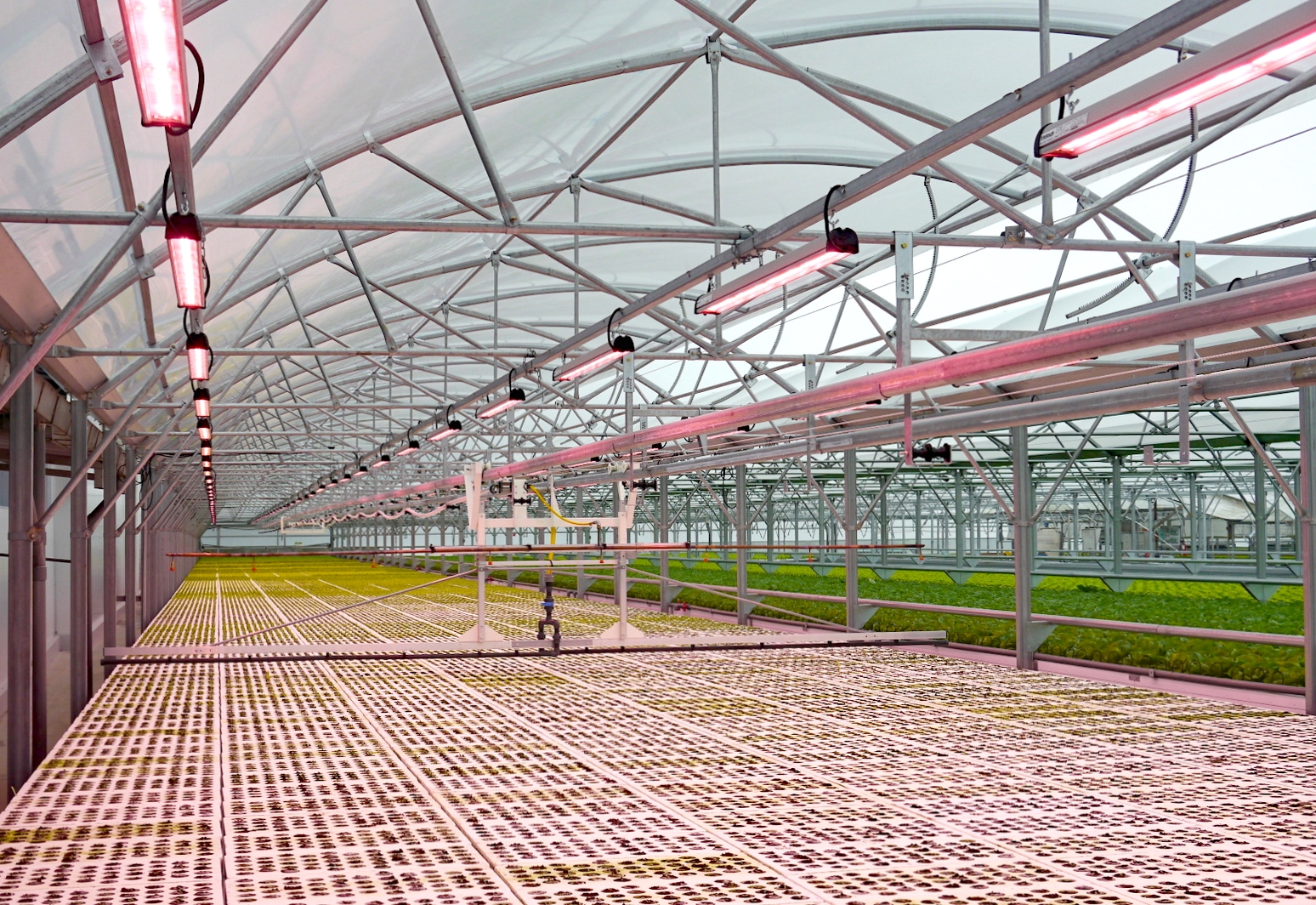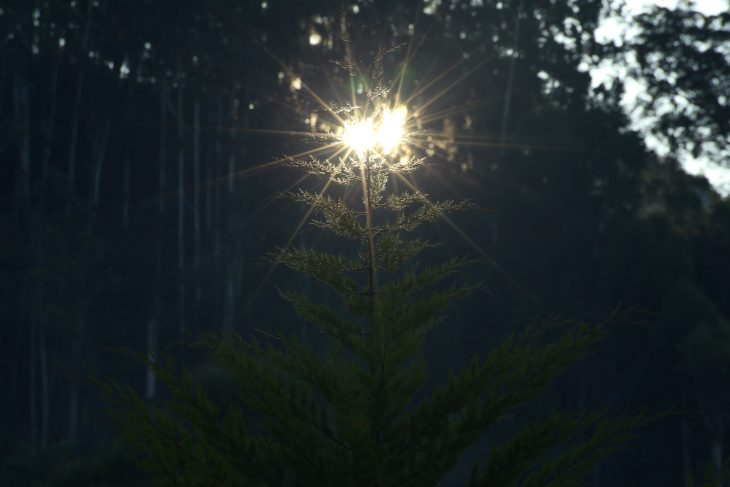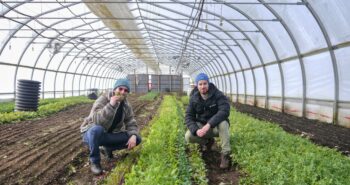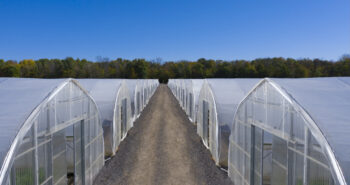This post is also available in: ![]() English
English
Introduction
Solar radiation is composed of more than 50% of thermal radiation (NIR infrared), about 45% of “light” useful for plants (PAR = photosynthetic active radiation 400-700 nm) and a small portion of ultraviolet radiation (UV 100 – 400 nm). Since the production of the first modern greenhouse covers, Ultraviolet light transmission (UV) have been the subject of many studies.
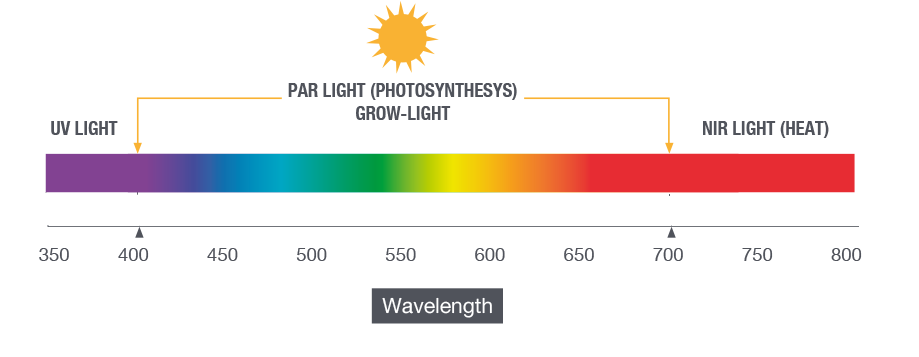
Due to its degrading effects, UV rays are negatively perceived by some growers, however some scientists have shown that ultraviolet wavelength rays are very favorable for crop development.
Different types of UV radiation
Three types of UV radiation have been distinguished according to their biological activities and their ability to penetrate the human skin. They correspond to three ranges of wavelengths:

- UV-A rays, with wavelengths 315 to 400 nm, represent 95% of the ultraviolet rays which reach the surface of the earth
- UV-B rays, at wavelengths 280-315 nm, is largely blocked by the ozone (O3) layer, but those that cross it are responsible for short-term damage, such as sunburn.
- UV-C rays, with wavelengths 100 to 280 nm, are the most dangerous, but they are completely absorbed by the ozone layer.
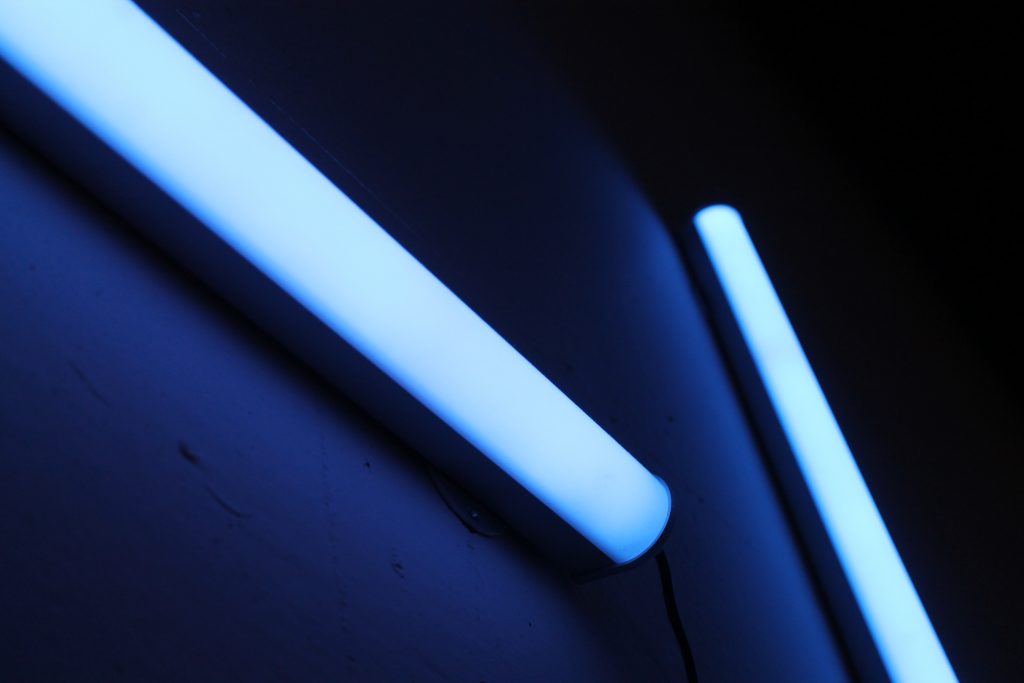
UV-A radiation is less harmful than UV-B and UV-C radiation on plants (Barta et al., 2004). Although they are a minor component of the solar spectrum
UV-B radiation are capable of disproportionately affect the metabolic processes in plants and microorganisms. UV-B can interfere with growth, development, photosynthesis, flowering, pollination and transpiration (Rozema et al., 1997).
Another example, exposed to a dose of 3.7 kJ.m-2 of UV-C, tomato crop, in the vegetative stage, acquires resistance to Botrytis during storage (Charles et al., 2008).
UV transmission through greenhouse covers
Standard glass cover transmits 65 to 75 percent of UV-A but 3 percent or less of UV-B and UV-C.
Most polyethyelene plastic film contain UV stabilizers treatment to retard their degradation, but stabilizers effects also degrade and will allow more UV transmission. Therefore, UV transmission will will evolve over time (plastic age). Nowadays, UV-Open greenhouse plastic cover exists. It optimizes pollination and synthesis of anthocyanins on red lettuce (Lactuca sativa L.) and strawberry (Fragaria × ananassa L) for example.
However, PE films can also have special additives that screen the UV-B radiations off (from 280 to 390 nm) and give them optimal properties for the growing of some varieties of roses, avoiding the “blackening effect”. The UV block effect prevents the spores of some pathogens (Botrytis, Oidium, Sclerotin) from germinating and viruses from developing.
A recent study studied the transmission of UV-B on different types of glass in comparison to ETFE (Ethylene tetrafluoroethylene):
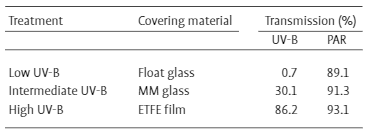
In this study, UV-B exposure during the greenhouse period led to a reduction in growth (leaf length, leaf area and leaf number) and an increase in flavonoid content on lettuce seedling.
Case example: UV-B treatment to increase THC concentration
Some scientists and growers suggest that UV rays may increase trichome density and THC content.
Thrichromes are hairs present on the surface of a plant organ. They can increase the absorption surface of the roots, while others reflect sunlight to limit evapotranspiration, retain rainwater, or provide protection to their host.
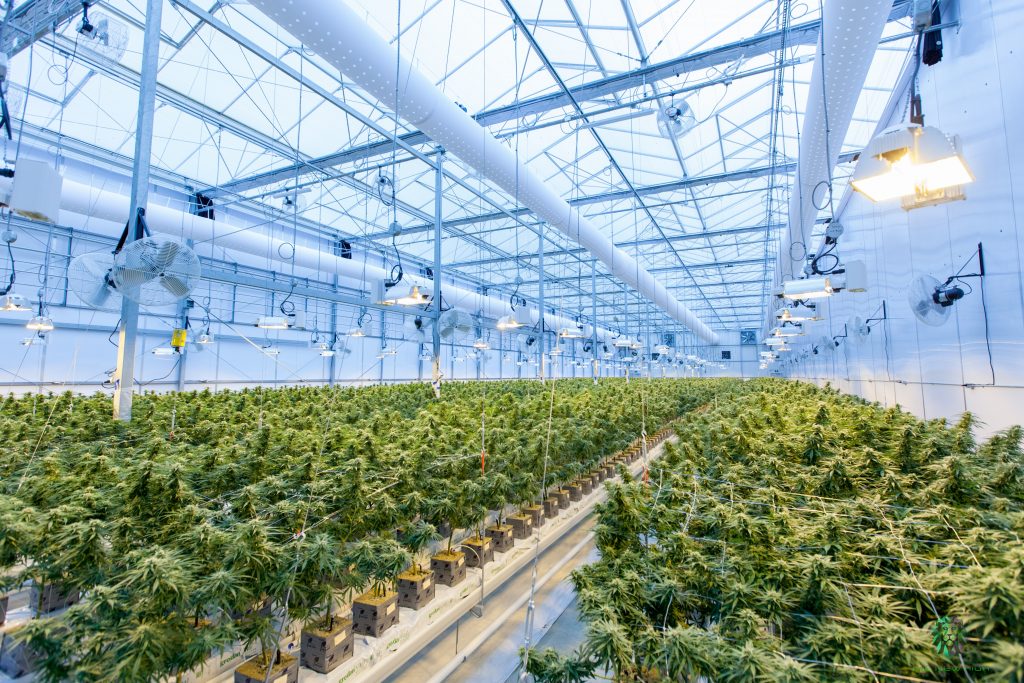
UV-B is the most effective radiation to induce a stress to the plant (photons efficiency). According to some research, exposure to these rays could cause an increase of the cannabinoids % when exposed to UV-B more particularly THC (Lydon, J. and al., 1987).
Conclusion
The role of UV on plants is a broad and well-documented theme, however, there are still many “puzzles” depending on the crop variety, exposure level and type of UV. The amount of UV required to achieve these potential benefits for the plants is not well known.
The advantage of growing under a greenhouse is to be able to control this parameter by adapting the type of cover (UV block / UV open) and the artificial lighting strategy (HPS, LED…) to influence the biological functions of plants such as photosynthesis, pollination, resistance to diseases and pests, synthesis of compounds …
Another point to consider about UV-Open glazing will hasten degradation of material such as irrigation lines and other plastic equipment inside the greenhouse. What is more, the labor will need a skin protection (especially for UV-B transmitting material)..
Sources:
Barta C, Ka’lai T, Hideg K, Vass I & Hideg E. 2004. Differences in the ROSgenerating efficacy of various ultraviolet wavelengths in detached spinach leaves. Func Plant Biol. 31: 23-28.
Charles MT, Goulet A & Arul J. 2008. Physiological basis of UV-C induced
resistance to Botrytis cinerea in tomato fruit IV. Biochemical modification of structural
barriers. Postharvest Biol Tec. 47 : 41–53
Chayma Ouhibi. 2015. Effets des rayonnements UV-C sur la réponse de la laitue romaine Lactuca sativa var Claudius aux contraintes biotoques et abiotiques https://tel.archives-ouvertes.fr/tel-01203364/document
Helene Behn and al., 2010. UV-B Transmittance of Greenhouse Covering Materials Affects Growth and Flavonoid Content of Lettuce Seedlings. European Journal of Horticultural Science 75(6):259-268.
Lydon, J. and al., 1987. UV‐B Radiation Effects on Photosynthesis, Growth, and Cannabinoid Production of Two Cannabis sativa Chemotypes. Photochemistry and Photobiology, 46 (2), 201–206.
Nikolaos Katsoulas and al., 2020. Plant Responses to UV Blocking Greenhouse Covering Materials: A Review https://www.mdpi.com/2073-4395/10/7/1021/pdf
Rozema J, Vandestaaij J, Bjorn LO & Caldwell M. 1997. UV-B as an enviromental
factor in plant life : Stress and regulation. Trends Ecol Evol. 12: 22-28
